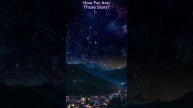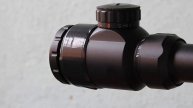Zooming in on the Seagull Nebula (IC 2177).
https://acquasheire.com/
http://goodnews.video/
This video sequence starts with a broad view of the Milky Way before closing in on the familiar bright star Sirius and the nearby constellation of Orion (The Hunter). We see a faint red object resembling a bird in flight — the Seagull Nebula (IC 2177) and zoom in on what turns out to be a dramatic star formation region. The final view of the head part of the seagull is a new detailed image from the Wide Field Imager on the MPG/ESO 2.2-metre telescope.Credit: ESO/Digitized Sky Survey 2/Nick Risinger (skysurvey.org). - Panning across the head of the Seagull Nebula: This video gives a close-up view of a new image from ESO's La Silla Observatory showing part of a stellar nursery nicknamed the Seagull Nebula. This cloud of gas, known as Sh 2-292, RCW 2 and Gum 1, seems to form the head of the seagull and glows brightly due to the energetic radiation from a very hot young star lurking at its heart. The detailed view was produced by the Wide Field Imager on the MPG/ESO 2.2-metre telescope.Credit:ESO.
-
Zoom sulla Nebulosa Gabbiano (IC 2177): Questa sequenza video inizia con una panoramica della Via Lattea e quindi punta sulla familiare stella brillante Sirio e la vicina costellazione di Orione. Si vede un oggetto rossastro e debole che ricorda un uccello in volo - la Nebulosa Gabbiano (IC 2177) e poi un ingrandimento di quello che si rivela essere una drammatica zona di formazione stellare. La visione finale della "testa" del gabbiano proviene dalla nuova immagine dettagliata ottenuta con il WFI (Wide Field Imager) montato sul telescopio da 2,2 metri dell'MPG/ESO.Crediti:ESO/Digitized Sky Survey 2/Nick Risinger (skysurvey.org). - Panoramica della testa della Nebulosa Gabbiano: Questo video ci mostra un primo piano della nuova immagine ottenuta all'Osservatorio di La Silla dell'ESO e mostra parte di una incubatrice stellare nota come Nebulosa Gabbiano. Questa nube di gas, chiamata anche Sh 2-292, RCW 2 e Gum 1, sembra formare la testa di un gabbiano e risplende a causa della radiazione energetica di una stella giovane molto calda annidata al centro. La visualizzazione dettagliata è stata prodotta dal WFI (Wide Field Imager) montato sul telescopio da 2,2 metri dell'MPG/ESO.Crediti: ESO.
Zooming in on the Seagull Nebula (IC 2177).
Видео Zooming in on the Seagull Nebula (IC 2177). автора Ancient Secrets
Видео Zooming in on the Seagull Nebula (IC 2177). автора Ancient Secrets
Информация
3 ноября 2024 г. 7:06:12
00:02:14
Похожие видео






















